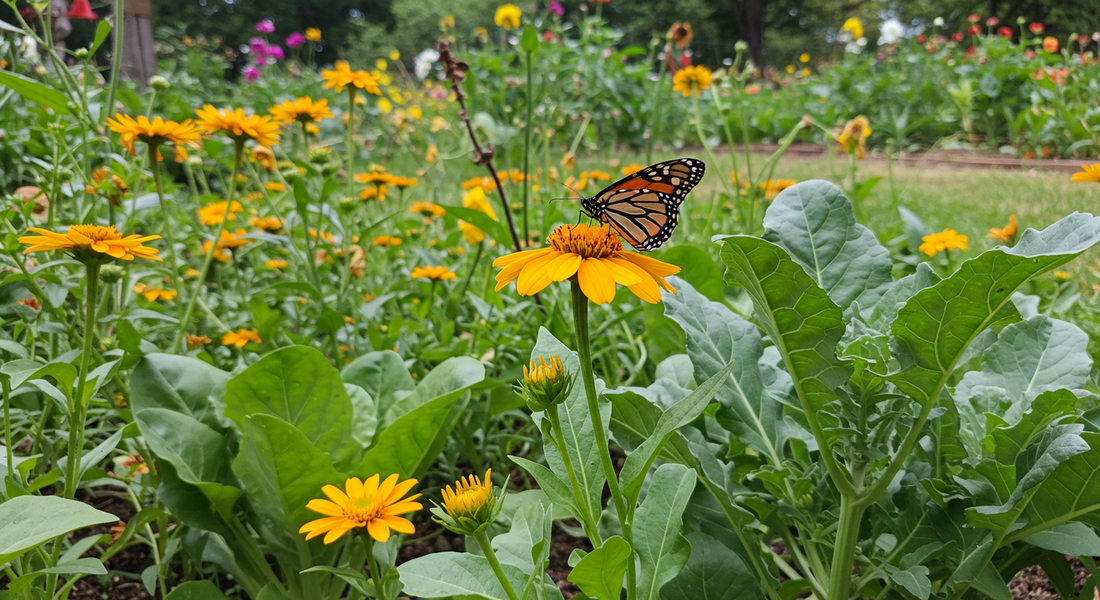
A Beginner's Guide to Organic Pest Control: 5 Natural Ways to Protect Your Garden
Share

A thriving garden is a beautiful thing, but discovering that your precious vegetables are being devoured by pests can be incredibly frustrating. The conventional response is often to reach for a chemical pesticide, but there is a healthier, more sustainable way. Organic pest control is about creating a resilient, balanced garden ecosystem that can largely defend itself, without the use of harsh chemicals. This approach is better for your health, the environment, and the beneficial creatures that call your yard home. It starts with understanding your garden not just as a plot of plants, but as a living ecosystem.
Strategy 1: Companion Planting
One of the oldest and most effective organic strategies is companion planting. This is the art of pairing plants together for their mutual benefit. Certain plants have natural properties that repel harmful insects, attract beneficial ones, or even improve the flavor of their neighbors.
-
How it Works: The strong scent of marigolds, for example, is known to deter nematodes in the soil and other pests above ground, making them a fantastic companion for tomatoes. Nasturtiums act as a "trap crop" for aphids, luring them away from your more valuable plants like squash.
-
Beneficial Pairings:
-
Tomatoes: Plant with basil and marigolds. Basil is thought to repel tomato hornworms.
-
Cucumbers: Plant near nasturtiums and oregano.
-
Lettuce: Carrots and radishes make great companions as they occupy different soil depths.
-
Strategy 2: Attracting Beneficial Insects
Not all bugs are bad! A healthy garden is buzzing with beneficial insects that act as a natural pest control army. Your goal is to create a welcoming environment for these allies.
-
Who to Invite: Ladybugs and their larvae are voracious aphid eaters. Lacewings also consume aphids, caterpillars, and other soft-bodied pests. And of course, pollinators like bees and butterflies are essential for a productive vegetable garden.
-
How to Attract Them: Plant a variety of small-flowered plants like dill, fennel, yarrow, and sweet alyssum. These provide the nectar and pollen that beneficial insects feed on. Avoid spraying any pesticides (even organic ones) that could harm them, and provide a shallow water source, like a birdbath with some stones in it for them to land on.
Strategy 3: Physical Barriers and Traps
Sometimes the simplest solution is a physical one. Barriers can prevent pests from ever reaching your plants in the first place.
-
Row Covers and Netting: Lightweight, floating row covers are a fantastic way to protect crops from flying insects like cabbage moths and squash vine borers. Drape the cover over your plants, securing the edges with soil or rocks. Just be sure to remove them from plants that require pollination once they start to flower.
-
Traps: Simple traps can be very effective. A shallow dish of beer sunk into the soil will attract and drown slugs. Yellow sticky traps can be hung to catch flying pests like aphids and whiteflies.
Strategy 4: Natural & DIY Sprays
When you have an active infestation, you may need to intervene with a spray. A natural insecticide for garden use can be made at home or purchased.
-
Neem Oil: Derived from the seeds of the neem tree, this is a powerful, all-purpose organic tool. It acts as both a pesticide and a fungicide, disrupting the life cycle of insects at all stages (egg, larvae, adult). Follow the package directions to mix with water and a little mild soap, and spray on plants in the evening to avoid harming pollinators.
-
Simple Insecticidal Soap: You can make your own effective spray for soft-bodied insects like aphids and mites. Simply mix one tablespoon of pure liquid soap (like Dr. Bronner's castile soap, not a detergent) into one quart of water. Spray directly onto the pests. The soap breaks down their outer shell, causing them to dehydrate.
Conclusion: Working With Nature, Not Against It
Effective organic pest control is about a holistic approach. By using a combination of these strategies, you can create a garden that is not only productive but also in harmony with the natural world. It requires observation and a little patience, but the reward is a healthy, thriving garden that provides safe and delicious food, all while working with nature, not against it.
